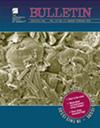美国宾夕法尼亚州和特拉华州皮埃蒙特省白粘土河流域3 - 5级沉积前后过程与环境
IF 3.9
1区 地球科学
Q1 GEOSCIENCES, MULTIDISCIPLINARY
引用次数: 0
摘要
我们通过收集附近一个较大的三阶至五阶流域的数据,扩展了基于对美国宾夕法尼亚州东南部一阶至三阶皮埃蒙特流域的研究的两个假设。一种假说认为,定居前的河流走廊以湿地为主,另一种假说则认为,欧洲人定居后,河谷被鱼塘沉积所填满。这两种假设都支持新的河流修复实践,因此评估它们的普遍性很重要。十种岩相表示沉积环境,而土壤地层标准和14C测年确定了沉降前和沉降后的地层单元。类似于现代河床沉积物的基底砾石代表了具有活跃推移质输送的沉降前通道。类似现代坝的楔形砾石沉积物进一步记录了通过渠化流进行的沉积前推移质输送。当河漫滩上的水流淹没泛滥平原时,形成了大量的、贫有机质的细粒沉积物的沉降前和沉降后单元。泥炭沉积物暴露在一个地点(但其他地方没有),代表了一个沉降前的湿地。厘米厚、不连续、块状碳质细粒沉积物,偶尔覆盖在基底砾石上;这些可能代表邻近预沉淀通道或水力回水环境的局部湿地。在一座3米高的磨坝后面堆积了分层的沙子和泥浆,但在其他地方却没有这些磨塘沉积物。与其说是以湿地为主,不如说是将沉降前的河流走廊描述为河岸环境的复杂马赛克,包括较老的崩坡地貌、洪泛平原(其中一些可能是季节性淹没的湿地)、初级(可能是次级)河道,以及根据地貌设置,局部或横跨山谷的湿地。欧洲人定居后,鱼塘在当地很重要,但它们的沉积物只是地层记录的一小部分。本文章由计算机程序翻译,如有差异,请以英文原文为准。
Pre- and postsettlement depositional processes and environments of the 3rd- to 5th-order White Clay Creek watershed, Piedmont Province, Pennsylvania and Delaware, USA
We extend two hypotheses based on studies of 1st- to 3rd-order Piedmont watersheds of southeastern Pennsylvania, USA, by collecting data in a larger 3rd- to 5th-order watershed nearby. One hypothesis posits that presettlement river corridors were dominated by wetlands, and the other suggests that river valleys were filled by millpond sedimentation following European settlement. Both hypotheses support new river restoration practices, so their generality is important to assess. Ten lithofacies indicate depositional environments, while pedostratigraphic criteria and 14C dating define presettlement and postsettlement stratigraphic units. Basal gravels similar to modern stream bed sediments represent presettlement channels with active bedload transport. Wedge-shaped gravel deposits resembling modern bars further document presettlement bedload transport by channelized flows. Extensive presettlement and postsettlement units of massive, organic-poor, fine-grained sediment formed when overbank flows inundated floodplains. Peat deposits, exposed at a single site (but absent elsewhere), represent a presettlement wetland. Decimeter-thick, discontinuous, massive carbonaceous fine-grained sediments occasionally overlie basal gravels; these may represent localized wetlands adjacent to presettlement channels or hydraulic backwater environments. Laminated sand and mud accumulated behind one 3-m-high mill dam, but these millpond deposits are absent at other sites. Instead of being dominated by wetlands, presettlement river corridors are better described as a complex mosaic of riparian environments including older colluvial landforms, floodplains (some of which may have been seasonally inundated wetlands), primary (and possibly secondary) channels, and depending on geomorphic setting, either localized or valley-spanning wetlands. After European settlement, millponds were important locally, but their deposits represent a minor component of the stratigraphic record.
求助全文
通过发布文献求助,成功后即可免费获取论文全文。
去求助
来源期刊

Geological Society of America Bulletin
地学-地球科学综合
CiteScore
9.30
自引率
8.20%
发文量
159
审稿时长
4-8 weeks
期刊介绍:
The GSA Bulletin is the Society''s premier scholarly journal, published continuously since 1890. Its first editor was William John (WJ) McGee, who was responsible for establishing much of its original style and format. Fully refereed, each bimonthly issue includes 16-20 papers focusing on the most definitive, timely, and classic-style research in all earth-science disciplines. The Bulletin welcomes most contributions that are data-rich, mature studies of broad interest (i.e., of interest to more than one sub-discipline of earth science) and of lasting, archival quality. These include (but are not limited to) studies related to tectonics, structural geology, geochemistry, geophysics, hydrogeology, marine geology, paleoclimatology, planetary geology, quaternary geology/geomorphology, sedimentary geology, stratigraphy, and volcanology. The journal is committed to further developing both the scope of its content and its international profile so that it publishes the most current earth science research that will be of wide interest to geoscientists.
 求助内容:
求助内容: 应助结果提醒方式:
应助结果提醒方式:


